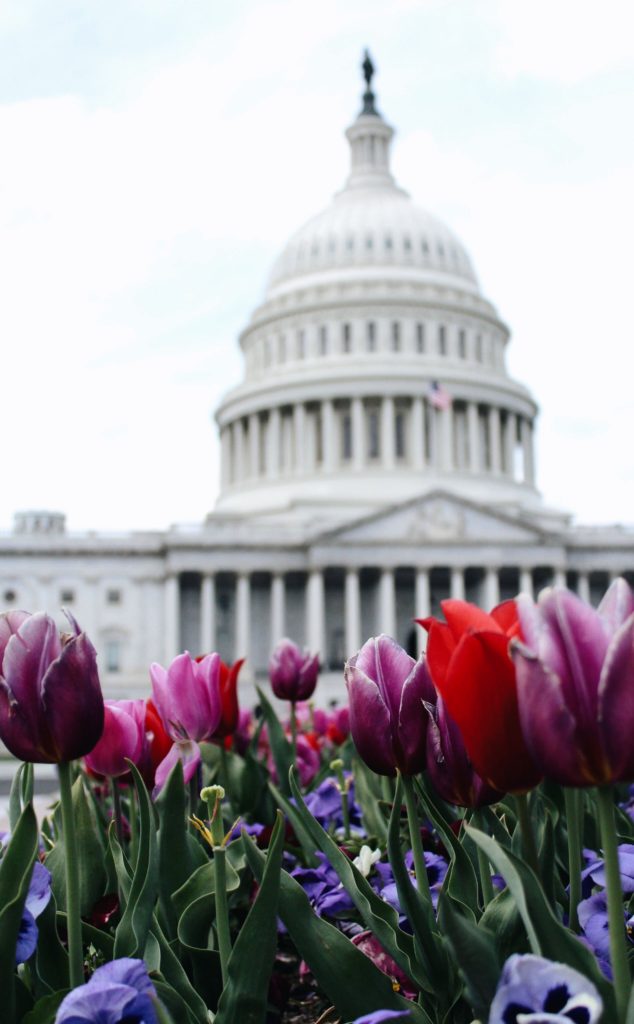The 118th Congress Convenes

From our Nation’s Capital, Roll Call informs us
A bloc of [twenty] Republican opponents Tuesday kept Kevin McCarthy from becoming speaker on three ballots, and the House adjourned to come back on Wednesday and try again to pick a leader.
McCarthy, R-Calif., had told his colleagues as the day began he would not back down, and his supporters said there would be repeated votes. After three votes, the last of which saw McCarthy lose one of his earlier supporters, a motion from McCarthy ally Tom Cole of Oklahoma to adjourn until noon Wednesday was adopted by voice vote.
Roll Call adds
The history-making chaos in the House drew most of the attention Tuesday, but longtime senators were making history of their own.
Sen. Patty Murray, D-Wash., was elected as the first woman to serve in the constitutional office of president pro tempore, while Senate Minority Leader Mitch McConnell eclipsed Montana Democratic Sen. Mike Mansfield’s record for length of service as a party floor leader. * * *
And not to be outdone, [Sen. Chuck] Schumer had some history of his own, becoming the longest serving senator from the state of New York.
STAT News reports
The nation’s health agencies already have a long to-do list for 2023.
Top officials have promised reforms in the food, drug, and public health departments as frustrations mount over the federal response to Covid-19 and last year’s widespread baby formula shortages. Biden administration appointees are racing to fix pandemic-exposed cracks in the systems for mental health care, addiction treatment, and health coverage, even as millions of people are likely to be kicked out of Medicaid, the federal program serving low-income people with few resources. There’s still no one leading the National Institutes of Health.
And while Congress delivered many of the president’s requests in the end-of-year spending package last month, it also dropped several provisions that would have given federal health regulators more authority.
From the New Years predictions front, STAT News informs us
For almost three years, hospitals and health insurers have been riding the waves of the Covid-19 pandemic. Even though they can better predict what lies ahead in 2023, there remain several big unknowns. STAT’s business reporters will be paying attention to three trends in particular: the end of the public health emergency, how hospital price hikes will affect people’s paychecks, and Medicare Advantage’s explosive growth.
From the pricing transparency front, Kaiser Health News reminds us that
As of Jan. 1, health insurers and employers that offer health plans [including FEHB plans] must provide online calculators for patients to get detailed estimates of what they will owe — taking into account deductibles and copayments — for a range of services and drugs. * * *
So how will it work?
Patients, knowing they need a specific treatment, drug, or medical service, first log on to the cost estimator on a website offered through their insurer or, for some, their employer. Next, they can search for the care they need by billing code, which many patients may not have; or by a general description, like “repair of knee joint,” or “MRI of abdomen.” They can also enter a hospital’s or physician’s name or the dosage amount of a drug for which they are seeking price information.
Not all drugs or services will be available in the first year of the tools’ rollout, but the required 500-item list covers a wide swath of medical services, from acne surgery to X-rays.
Once the information is entered, the calculators are supposed to produce real-time estimates of a patient’s out-of-pocket cost.
Starting in 2024, the requirement on insurers expands to include all drugs and services.
This requirement was created by the 2020 Transparency in Coverage Rule issued under the 21st Century Cures Act and the 2021 No Surprises Act.
On a related note, Health Leaders Media tells us
According to the recent report by the OIG investigating instances of incorrect co-surgery and assistant-at-surgery modifier usage, 69 of 100 sampled procedural services did not meet federal requirements.
An additional review of 127 corresponding services found that 49% were noncompliant with federal requirements, as well.
The OIG reviewed a randomly selected sample of 100 services rendered by Part B providers between 2017 and 2019 with certain CPT procedural codes and a Medicare Physician Fee Schedule (MPFS) co-surgery indicator of 1 or 2. The reviewed procedures included spinal fusions, knee replacements, and endovascular repairs, among others.
That’s a big bowl of wrong.
From the pricing reforms front, Fierce Healthcare relates
Physician group practices participating in the Bundled Payments for Care Improvement (BPCI) Initiative garnered cost savings for the top five conditions that require medical intervention but did not save money for the top five surgical procedures.
On the other hand, hospitals participating in the BPCI initiative saved money for both categories, according to a study in JAMA Health Forum.
Researchers at the University of Pennsylvania said their findings underscore the “suitability of hospitals to bundled payment models, specifically highlighting their relative advantage over group practices in achieving cost and potential quality outcomes for medical conditions.”
From the Rx coverage front —
- Biopharma Dive offers us a look back at the FDA’s drug approvals in 2022 — “The agency’s main review office cleared 37 new medicines last year, its lowest total since 2016 and well below 2021’s mark of 50.” — and a look forward at ten clinical trials to watch in the first half of 2023 — “Highly anticipated study results are expected in Alzheimer’s, obesity and Huntington’s disease, while a pair of high-priced acquisitions could be put to the test.”
- STAT News has questions stemming from the recent Congressional investigative report on the Aduhelm fiasco.
- The New York Times reports “For the first time, retail pharmacies, from corner drugstores to major chains like CVS and Walgreens, will be allowed to offer abortion pills in the United States under a regulatory change made Tuesday by the Food and Drug Administration. The action could significantly expand access to abortion through medication. * * * Whether large pharmacy chains and local drugstores would opt to make the pills available was not immediately clear Tuesday. A spokesman for Walgreens, Fraser Engerman, said: “We are going to review the F.D.A.’s decision.”
- The Wall Street Journal adds “Most abortions in the U.S. happen via the pill, according to the Guttmacher Institute. Several organizations that mail abortion pills, sometimes to women in states with abortion bans, have seen shipments increase since the Supreme Court’s latest abortion decision. * * * Also on Tuesday, the Justice Department issued an opinion saying that abortion pills can be sent through the U.S. mail, as long as the sender doesn’t intend them to be used unlawfully. The U.S. Postal Service and the Department of Health and Human Services had asked the Justice Department to clarify an 1873 law, which had been invoked by Mississippi’s attorney general in a lawsuit last year, that prohibits mailing items that can be used to produce abortions.”
From the mental healthcare front, the American Hospital Association places a spotlight on children and adolescent care.







